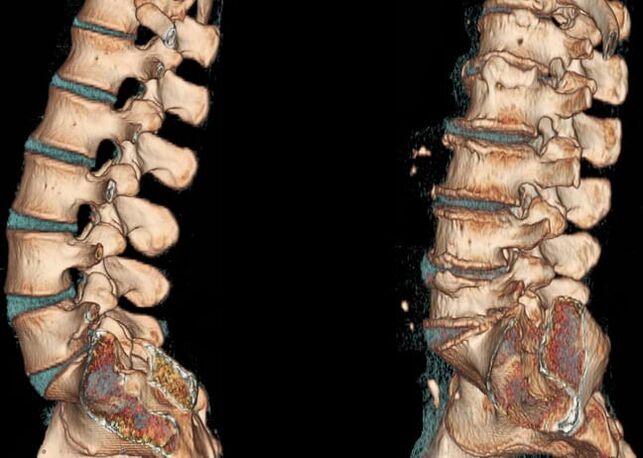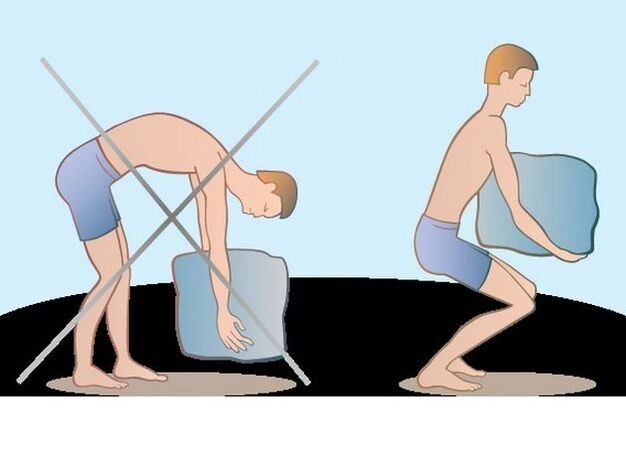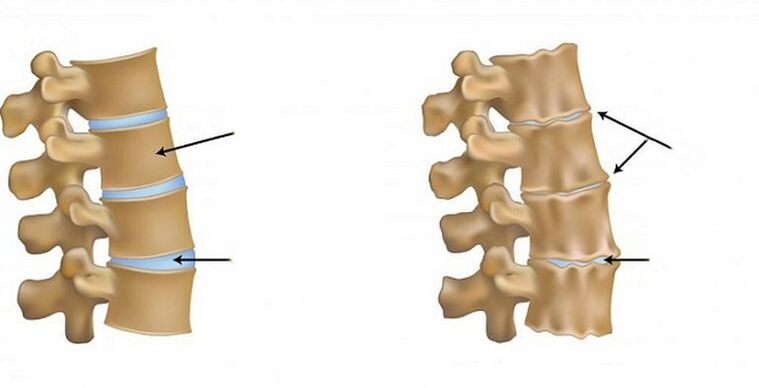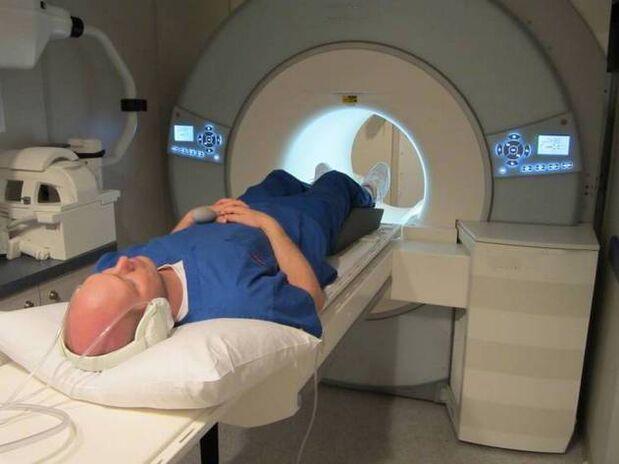
People with osteochondrosis of the lumbar column always avoid sudden movements, support carefully and turn on the sides, sit slowly, get up.Then they try to prevent acute and perforated back pain, forcing them to freeze in a position of the body.Osteochondrosis is also manifested by creaking, click, limitation of mobility.Its treatment is more often conservative, but with serious damage to the discs and vertebrae, surgery is needed.
What is osteochondrosis of the lumbar column
Lumbar osteochondrosis is a degenerative dystrophic pathology, which initially affects intervertebral discs.Due to the insufficient intake of nutrients, they lose the ability to retain humidity.The regeneration processes slow down, the discs become dishes, fragile.The distance between the adjacent vertebrae is therefore reduced, the bone tissues grow to stabilize the lumbar segment affected by the osteocondrosis.Osteophytes are formed: bone growth, with the movement of which the structures of soft tissues, the nerve roots, the blood vessels are injured.
Pathology phase
The Stadium of the osteocondrosis is the stage of the development of the disease, which is characterized by some destructive changes in the discs and bodies of the vertebrae.It is established using an X -ray examination. On the resulting images, specific signs of destruction of the vertebral structures are clearly visible.Each stadium corresponds to the gravity of the osteochondrosis, a series of symptoms.The higher, the more difficult the disease lends itself to conservative treatment.
| Lumbar osteochondosis stadium | X -ray characteristics and clinical events |
| First (preclinic) | There are no signs of osteochondrosis on radiographs.Occasionally there are uncomfortable sensations in the lower back after physical effort or long -term living room on the legs |
| Second | There is a correction of lordosis, less often: the scenes of the vertebral bodies, the deformation of the semi -moon processes.The height of the discs is slightly reduced.The painful sensations appear more often, their duration increases |
| Third | Subcontreme sclerosis of the closing plates are observed, the damage to a large number of semi -moon processes and a moderate reduction in the height of the disc.In addition to pain in the lumbar region, the clinic contains a creaking, rigidity of the movements |
| Fourth | The semi -moon processes are refused outwards and posteriorly.There is a compensatory growth of bone tissues, the formation of more osteophytes.Pain occurs when it moves and resting |
Causes of the disease

The causes of the development of osteochdrosis have often increased on loads on the lumbar column.The discs are constantly microtrauma, not having time to recover in a timely way.A significant part is gradually damaged, launching the deformation of the bone bodies of the vertebrae.These pathological conditions are also able to cause the destruction of the lumbar segment:
- Congenital or acquired anomalies - flat, scoliosis, kyphosis, Valgus of the foot deformation, TBS dysplasia;
- Systemic pathologies - Rheumatoid arthritis, scleroderma, red lupus;
- Endocrine and metabolic diseases, gout, diabetes mellitus, hypo- and hyperthyroidism, obesity;
- Previous injuries - Subluxation of the vertebrae and their fractures, damage to the spinal cord;
- Circulatory disorders, including the background of a sedentary lifestyle.
One of the main causes of osteocondrosis is the natural aging of the body.After 50 years, the recovery processes slow down, the production of collagen decreases, the state of the ligaments worsens.
Characteristic signs and symptoms of the disease
In the initial phase of development, osteochondrosis does not appear clinically.A person takes a weak pain of the lower back of the back for muscle overvoltage after a working day and does not consult a doctor.But the severity of the symptoms is slowly increasing: soon a crunch with inclinations and turns of the case, sensitivity and rigidity disorders are united to pain.
Rook syndrome
This is the name of the defeat of the spinal roots, which leads to motor, vegetative and serious disorders.Rotore syndrome develops with 3-4 gravity osteochondrosis.In these phases, an intervertebral hernia is formed, compressing the spinal roots.The pathology proceeds according to the type of lumbago, lumbalgia and lumbar -Liagia.In addition to serious pain, the root syndrome is characterized by sensations of numbness, tingling, crawling goosebumps, decrease or complete absence of sensitivity.
Ischemic syndrome

In the late phases of the course of the lumbar osteocondrosis, it is possible to compress the large blood vessels.The pelvic organs cease to receive a sufficient amount of nutrients, which leads to a violation of their functioning.The cerebral brain trophy is also upset, a neurological deficiency develops: an intermittent lame appears, the temperature, the sensitivity to pain decrease.
Vertebrate syndrome
Due to the reduction of the distance between the adjacent bodies of the vertebrae, the growth of bone tissues, the vertebral lumbar segments are gradually deformed.The situation is aggravated by constant compensatory stress of the back muscles with their subsequent atrophy.Changes a person's pace and posture pathologically, included due to the improper redistribution of loads.The probability of involving other parts of the vertebral column and legs of the legs in the process of destructive depressive has significantly increased.
Pain syndrome
In the lower part of the back there is a large sciatic nerve formed by sacral spinal roots.When he is violated with Ernian protruding, bone growths, spasmodic muscles, Istia - a typical symptom of lumbar osteochondosis.There is an acute pain that spreads along the sciatic nerve on the hips, knees, lower legs (lumbar -itry).Another specific feature of the pathology: lumbago or "blows" in the lower back of the back after a strong inclination or turn, hypothermia.
Diagnostic methods

When making a diagnosis, the radiographic images taken in two projections are more information.To study the lumbar segment interested in more detailedly, a magnetic resonance imaging is performed.The study allows to evaluate the condition of the spinal cord, the structures of soft tissues, of the blood vessels, the nerve roots.It is possible to determine the degree of damage to the nerve trunks using potentials caused, electronography, electromyography.Discography is used for the targeted examination of the records.
How the treatment is carried out
A global approach to therapy for lumbar osteochondrosis is practiced.The treatment aims to eliminate pain, restoring the volume of movements, preventing the spread of the pathology at healthy discs and vertebrae.
Drugs
The use of non -pound, glucocorticosteroids, muscle relaxant anti -inflammatory drugs allows you to get rid of back pain.In therapy, drugs are used to improve blood circulation.Patients should be prescribed vitamins of group B, chondroprotectors.
Medical physical education
This is the most effective and convenient treatment for osteochondrosis.After 1-2 months of daily treatment of physiotherapy exercises, the muscles not only of the lower back, but completely the back, improves posture, accelerate the flow of blood to damaged connective tissue structures.LFK doctors recommend that patients recommend smooth shifts and bust inclinations, shallow squats and lunges.
Massage
Patients with lumbar osteochondrosis show all types of massage: emptiness, acupuncture, connective, segmentary.But the most requested is classic.During the session, the masseur performs the main massage movements: caressing, rubbing, dough, vibration.The objectives of the procedures are to eliminate muscle cramps, improve blood circulation in the segment concerned and strengthen the skeletal muscles.
Physiotherapy
In an acute and subacuto period, patients are prescribed by electrophoresis or ultra -seporesis with glucocorticosteroids, anesthetics, group B vitamins. In the remission phase, laser therapy, magnetotherapy, therapy of stressed waves and UHF therapy are often performed.Ozoretolings, paraffin applications, hirudotherapy, mud, radon, hydrogen sulfur baths are also used.
Surgery
The main indication for the surgery is the violation of the spinal cord with Ernian protrusion.During the operation, the intervertebral hernia is removed, the decompression of the spinal canal is performed.The most frequently used methods of surgery for lumbar osteochondrosis are micro -prowess, sting vaporization or the laser reconstruction of the disc, installation of the system, the stabilization of the vertebral segment.
Traditional medicine
After the main therapy, the results of the stable remission in the treatment are used, homemade ointment, herbal tea, compressed, rubbing of oil and alcohol.Popular remedies do not affect the cause of the osteocondrosis, therefore they are used to eliminate weak, painful pain, gravity in the lower back after hypothermia, a strong change of time or greater physical activity.
The consequences of the lack of treatment
The development of almost all complications of the lumbar osteochondrosis is caused by the intervertebral hernia formed.Discogenic myelopathy is particularly dangerous, which does not always appear even surgical treatment.It manifests itself from pelvic disorders, including defecation disorders, urination.The complications of the osteocondrosis also include Rooser syndrome - a common cause of acute and perforated back pain.
Prevention and forecast measures
The prognosis is favorable in the diagnosis of pathology of 1-2 degrees of gravity.It lends itself well to conservative treatment and in young patients it is even possible to partially restore the tissues of intervertebral discs.With the development of complications, the forecast for full recovery is less favorable.
The prevention of the osteocondrosis of the lumbar column is to control body weight, the exclusion of excess loads, the timely treatment of endocrine and metabolic diseases.Neurologists and vertebrologists recommend visiting the swimming pool, engaging in Acquaerobica, Pilates, Scandinavian walks.




















